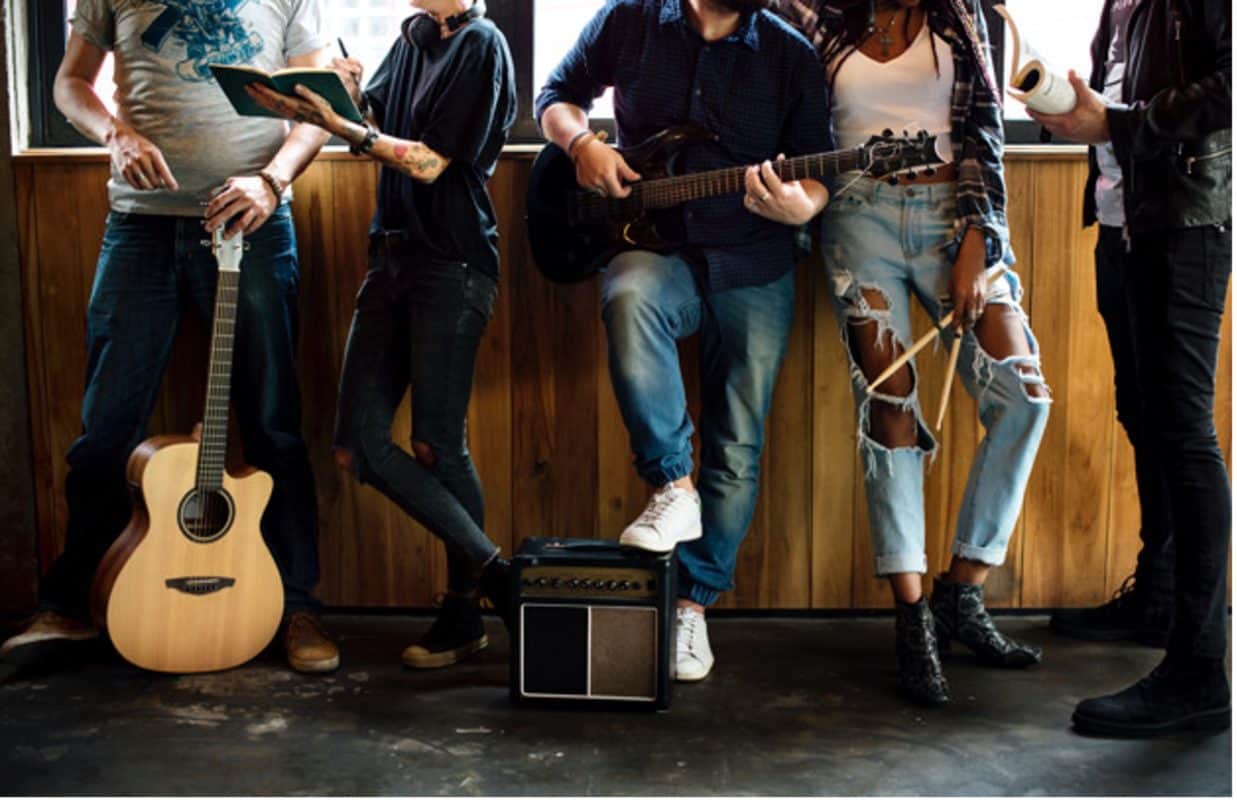No products in the cart.
There are different techniques that may help you in recording guitar covers using an amp to mic input. For that, the important thing is to learn some basic rules that you will need to follow.
For example, make sure the input gain is in good status and check your signal to signal and analog systems. Also, you want to make sure your mic placement and connections with the speaker, the interface, and the computer are established in the right manner, so you don’t fall into any kind of error.
Firstly, you will need an audio interface. It takes your guitar signal or any analog signal and transfers it to a digital signal that your computer can read. For example, the Focusrite to i2 has two inputs and two outputs, so you can record up to two instruments or signals into this. At the same time, you can plug into two speakers out. There are many different options for audio interface – for example, we can use GarageBand, which comes free on any Mac computer.
Most Common Technique For Recording Guitar
Now that you have your audio interface on the computer, let’s talk about the most common way to record your guitar, which is with an amp and one microphone.
In this case, your guitar signal is going from the guitar quarter-inch cable into the amp connected with a microphone XLR cable into the interface. This interface is then connected to the computer. Remember to make sure that the audio interface comes with multiple inputs, so you don’t have trouble recording your guitar from amp to mic input.
Check Recording Levels
It is always a good idea before you start recording to check your recording levels. Make sure your input gain is cool, so all meters are green, yellow, and red.
If you’re in the green, you’re good to go. If you’re in the yellow, you’re still in a safe spot, but you’re on the verge of clipping. If you’re getting into the red, then you’re clipping. This means you should adjust your input gain, which is typically on the front of your audio interface.
Options for Microphones for Recording Guitar
There are many different options for microphones which typically fall into three categories:
- Dynamic
- Condenser
- Ribbon
A thing about condenser microphones is they require phantom power, a little bit more juice to get those mics going. So there’s usually a 48-volt button or switch on the front of your interface. Make sure you turn off your phantom power before unplugging your condenser microphone. Phantom power is a little elusive. Whatever the type of the microphones, make sure they are pointed directly at the speaker’s center.
Mic Placement and Off-Axis Technique
An easy way to vary the mic placement is to simply move it back from the speaker a little bit. Another way that you can place your microphone – a term that you’ll often hear is off-axis. It basically means that you’re taking the microphone and turning it diagonally about two inches away from the center of the cone. It gives a less direct feel and more of a room.
Another way is to take that quarter-inch that was going into your amp and go straight into the interface. When we plug our guitar directly into the interface, we then look to ant modeling software just like we have choices with audio interfaces. There are many choices for amp modeling software as well. While you are still experimenting, check those levels and make sure that you’re not clipping.
Final Words
So, these are some simple guitar recording techniques, using one microphone or directly into an audio interface. Always remember you can put the microphone wherever you want it. If you think it sounds right, then it does – let this be a guide to get you going on recording electric guitar.

